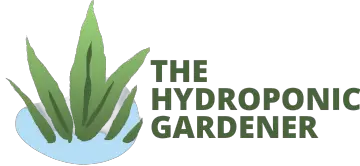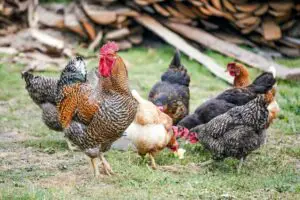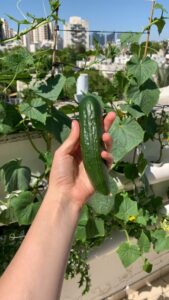Are you looking for the perfect soil additive to help your hydroponic garden flourish but need help deciding which one to choose? If you want something that will aerate the soil and retain just enough water. Hydroton and Perlite are two options worth considering.
Hydroton is a brand of expanded clay pebbles made from naturally occurring clay. They are ideal for hydroponic and aquaponic systems. This is because they have a large surface area, allowing them to hold and distribute more air in the root zone. They also provide good drainage, keeping water from becoming overly saturated, which can lead to root rot. In addition, their porous structure helps to protect delicate plant roots from extreme temperatures.
Perlite is a volcanic mineral heated to very high temperatures until it expands. This result in tiny white balls of lightweight material ideal for drainage and aeration. Its porous structure provides plenty of room for root growth while allowing water to pass through quickly.
If so, then it’s time to consider hydroton vs. Perlite. Hydroton is an expanded clay material, and Perlite is a volcanic rock. Both are highly effective soil amendments that can improve moisture retention, drainage capacity, or overall structure of the medium – depending on your individual needs. This blog post will compare the two products’ affordability and availability in stores. When each should be used in gardening applications. Keep Reading on to make a sound decision informed by reliable research!
The Differences Between Hydroton And Perlite
Origin And Formation
Hydroton is a lightweight expanded clay aggregate (LECA) formed by heavy heating clay to high temperatures until it forms spherical, porous balls. It is composed of small particles of clay that are compressed and fired at 1,200°C before being coated with a burnt coating, making it highly resistant to water uptake or leaching of minerals.
On the other hand, Perlite is an amorphous volcanic glass created from obsidian when water seeps into its crystal structure over time. It has an extremely high specific surface area due to its honeycomb-like structure. It consists of small gas pockets that provide excellent deep water culture or drainage properties. Moreover, Perlite has no nutritional value due to its pure nature; however, it does not compact as much as hydroton, making it lighter and easier to work with in smaller containers.
Both hydroton and Perlite offer many advantages for both soil and hydroponic gardens. They provide great aeration. While allowing plants’ roots access needed moisture and nutrients. They can grow healthily without having to be watered too often. However, each material has distinct characteristics that may make one preferable over the other depending on individual needs or preferences.
Color
When it comes to the color of hydroton vs. Perlite, there are several distinct differences between the two. Hydroton is usually a brown-like color, while Perlite is typically white. This difference can be attributed to the material where these growing mediums are from.
Hydroton is generally made from clay, so it often has an earthy hue or shade that varies from dark to light brown. Its coloring is due to the nutrient content in clay-based soils, giving it its unique look. On the other hand, Perlite is formed by the rapid cooling of lava or magma and instantly turns white due to moisture.
In recent years, some companies have begun producing colored versions of hydroton to make them more marketable for landscaping projects. These colored versions include green, yellow, blue, and white. While these colors may be attractive for landscape design purposes. They do not affect the effectiveness of hydroton as a growing medium or its ability to retain moisture in soil or containers.
Perlite’s white appearance makes it ideal for certain plants and looks great in many different settings, such as the hydroponic system during indoor gardening projects. It also provides excellent drainage properties and aeration when mixed with soil-based hydroponic media such as peat moss or vermiculite.

Size
Hydroton comprises clay pellets formed into solid balls with diameters measuring from 3 to 16 millimeters. Each ball is hollow in the middle and has excellent aeration properties, making it an ideal choice for hydroponic systems. It is also quite lightweight, and its porous nature allows oxygen and water to penetrate quickly through its walls.
On the other hand, Perlite is made up of tiny particles that range from 0.5 to 3 millimeters in diameter. The particles are extremely lightweight and contain abundant moisture, which can benefit plants grown in a hydroponic environment. Perlite also provides better drainage than other growing mediums. Since its small particle size enables it to hold less water than others, such as soil or coir.
When you compare these two growing mediums side by side, the difference in size becomes very apparent. A single hydroton ball can be more than five times larger than a particle of Perlite! Furthermore, when placing them together in a container or tray. You will find that hydroton takes up much more space due to its large volume relative to its weight compared to Perlite, which compacts down quite easily due to its small size.
Weight
Regarding the weight of horticultural growing media, two popular choices are hydroton and Perlite. Hydroton is an expanded clay aggregate formed into small spheres, while Perlite is a naturally occurring volcanic glass. Both materials have unique structural characteristics that make them suitable for different applications. Knowing their differences can help you decide which is best for your needs.
When it comes to weight, hydroton is heavier than Perlite by quite a lot. A cup of hydroton typically weighs around 58 grams, whereas a cup of Perlite only weighs around 18 grams. This makes it much easier to transport large quantities of Perlite than hydroton – especially if you need to carry it up or down stairs or over rough terrain! The lightness of Perlite also means it can be blended into other mediums like soil and compost without significantly increasing their overall weight.
The greater density of hydroton means that a single cup of this material can hold more water and nutrients than an equal amount of Perlite would. As such, many hydroponic gardeners prefer this product for its higher water retention capability and ability to hold nutrients near the roots during drought stress in the grow-op. However, because hydroton can also be heavier than other growing mediums, some growers note that its larger particle size may lead to oxygen deprivation at the root level if not amended with something lighter like sand or coco coir before filling a container or bed with it.
Water-Holding Capacity
One of the main differences between hydroton and Perlite in water holding capacity is particle size. Hydroton has larger particles that create more space, making it less capable of retaining moisture than smaller particles like those found in Perlite. The capillary action principle also plays a role in this difference; Perlite’s smaller particles allow for increased surface area, allowing it to absorb and hold more water than hydroton. This is why it is often used as a soil amendment or medium in hydroponics and gardening applications.
Perlite also has naturally occurring pores that can absorb up to 20 times its weight in water. This makes it ideal for providing extra aeration to the roots of your plants while still providing them with the moisture they need. It can also help prevent root rot due to its excellent drainage characteristics. Additionally, since Perlite is not known to decompose easily, it can be reused multiple times before needing replacement.
Water retention isn’t the only difference between hydroton and Perlite; their physical structure is also noticeably different. Hydroton typically consists of small clay pellets fired at high temperatures during production, giving them an almost rock-like texture when dry. Their shape and size remain unchanged by contact with water, unlike Perlite, which swells when exposed to moisture. Both materials have minimal nutrient retention capacity, so they are generally used as a support material rather than a source of plant nutrients.
FAQs
Yes, clay pebbles can be used instead of perlite, although some differences exist. Clay pebbles are heavier than perlite and do not swell when exposed to moisture as much as perlite. Additionally, clay pebbles can hold more water and nutrients near the roots due to their larger particle size but may lead to oxygen deprivation if not amended.
The best substitute for perlite is coco coir. This material is a renewable, organic byproduct of coconut husks that is highly absorbent and lightweight. It also has excellent drainage characteristics and can hold up to eight times its weight in water.

Image credit:pixabay.com
Conclusion
You may wonder what grow medium to use if you are hydroponically growing indoor and outdoor plants. Two popular choices are hydroton and perlite. Both have pros and cons, so choosing the best one for your needs is important. To help you make a decision, we’ve put together a helpful comparison of hydroton vs. perlite.
Hydroton is more expensive than perlite, but it lasts longer and can be replaced less often. Perlite holds moisture better than hydroton, but it can compact over time and needs to be replaced more frequently. Ultimately, the choice between hydroton and perlite comes from personal preference and what works best for your particular setup.






